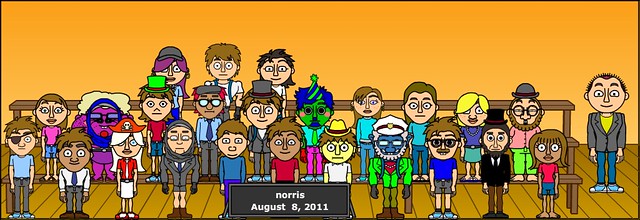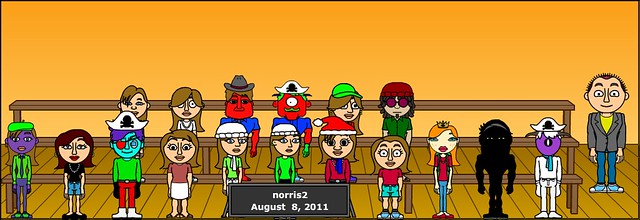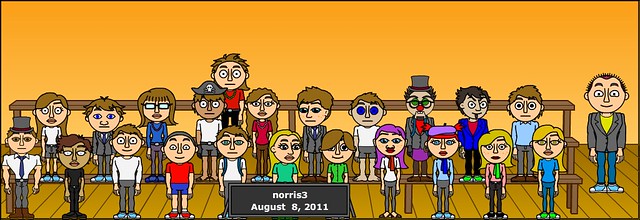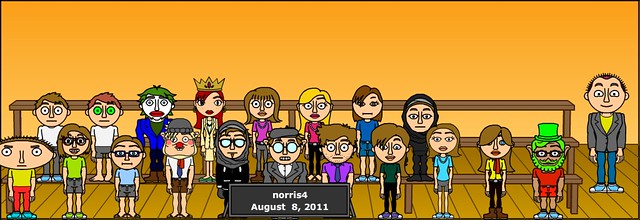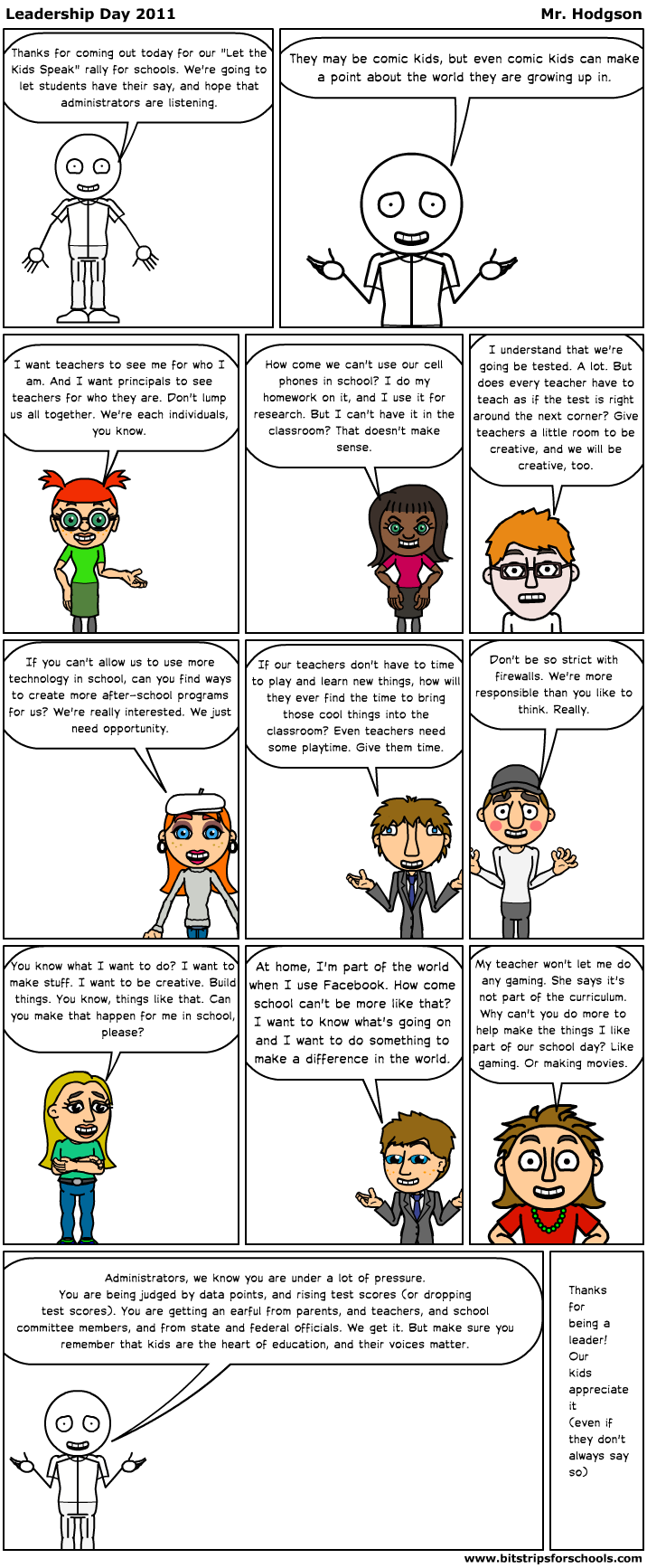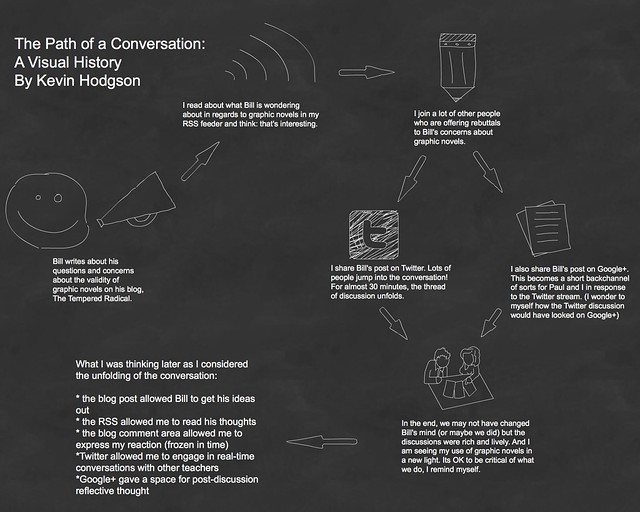
One of the more fascinating elements of being part of a network is that interesting discussions can emerge suddenly. This the journey of one particular thread that begin on one platform, moved into another, and then had a slight echo on a third. The experience had me thinking about how ideas “move” and also, how temporary they can be.
It began with my RSS. I get the increasing sense that more and more people are dropping out of their RSS readers for other ways to gathering content (just as I get the sense that blogging is now falling by the wayside for many people). But I still regularly read my RSS feeds, and yesterday, I found a post from Bill Ferriter, whose work and whose writing at The Tempered Radical I greatly admire. I am always interested in what he has to say.
His piece — entitled “Wondering (Worrying) about Graphic Novels” — certainly caught my eye. In it, Bill reflects on the possibility that graphic novels should not necessary be put into the vein as serious literature, and that despite the push by many (myself, included) to bring graphic novels into the classroom, he wondered if they really helped students as readers. He was questioning, more than criticizing, and so I ventured over to his blog.
There was already a very long queue of comments (it probably didn’t help that Bill ends his post by comparing graphic novels to The Jersey Shore in terms of substance), and I added my own thought about it being helpful to question everything we bring into the classroom, and that there are bad graphic novels, just as there are bad novels. And there are great graphic novels, just as there are great novels. What graphic novels bring to the table is a form of visual literacy, nuance, inferential thinking, etc, that many of the commentators noted.
As I usually do with posts that pique my interest, I shared Bill’s post on Twitter and on Google+, figuring I had some book-friendly friends who might be interested. They sure were.
Within minutes, a fast-moving, passionate defense of graphic novels was underway, and Bill himself jumped into the mix. I had trouble keeping up with the conversation but what I sensed was that here was the reason that I use Twitter — for sharing of ideas, for questioning of ideas, for passionate talk about things that matter. It was as if we were hanging out in the coffee shop. I felt bad because I had to leave the conversation early for a family thing but the talk continued long after I left.
Over on Google+, meanwhile, only Paul Hankins and I were briefly chatting it up, and in some ways, Google+ became a slight backchannel to the Twitter conversation that began as a blog post in my RSS feed. I find that amazing. You could argue that that is way too much media/tech for any conversation, but I find it a rich path of dialogue with each medium bringing something different to the texture of the discussion:
- Blog post: gives Bill a chance to articulate his ideas
- RSS: presents Bill’s ideas to the world
- Blog Comments: gives reader a chance to respond to Bill
- Twitter: engages many writers in a flow of conversation inspired by Bill’s writing
- Google+: provides backchannel, post-Twitter reflective space
Peace (in the reflective thought),
Kevin

